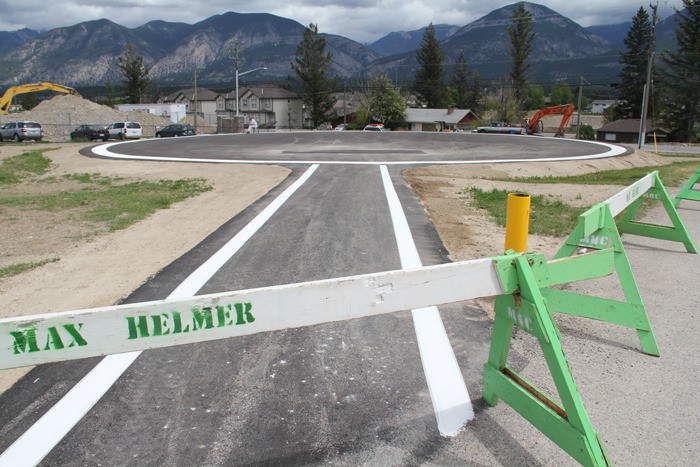Early to mid-June is being looked at as the completion date for upgrades to the helipad at the Invermere & District Hospital and while Health Service Administrator for Golden and Invermere & District hospitals Erica Phillips doesn’t foresee any problems with the final inspection, the Transport Canada inspector might have concerns around the construction work that’s begun on the Columbia Village Garden complex next door, Phillips said.
“My guess would be that they may have some concerns around flying debris and that kind of stuff, which could impact helicopters using the pad during the construction phase,” she said. “I don’t know for sure, it’s a thought, just something to bear in mind.”
Interior Health Authority (IHA) is waiting on BC Hydro to complete what remaining work is left before inviting Transport Canada to do the final inspection, at which point an inspector will determine the helipad’s certification and any limitations on use. The hospital’s helipad shut down after failing a Transport Canada safety inspection in 2010.
The finished construction on Columbia Village Garden will not have an impact on the certification process as plans for the building were approved with the helipad in mind, Phillips confirmed.
STARS, the Alberta-based non-profit that provides emergency medical transport for the East Kootenay, is waiting to hear from Transport Canada on the certification process, said Cam Heke, the organization’s manager of media and public relations. STARS has been using the landing strip at the unofficial Invermere airport since the helipad shut down two years ago.
“Ultimately we’ll be informed of what we can use on the helipad through Transport Canada,” said Heke. “We don’t anticipate any issues with flight paths or anything else in terms of responding to that helipad if it’s certified as H1 for both of our aircraft.”
The H1 designation allows a helipad to receive landings from dual-engine, H1-certified helicopters. STARS has operated for 26 years, using dual engine helicopters since inception. Next year, the organization will be acquiring a new AW1-39 aircraft that’s larger, heavier and more powerful than its current fleet.
“That helicopter flies significantly faster, further without refueling, and can carry two critical care patients… if the [new helipad] is large enough, then we’ll be able to land our aircraft there,” Heke said. “We anticipate it would be.”
Out of its Calgary base, STARS responded to the southeastern areas of B.C. 53 times last year, and 69 times in 2010. Last year, 10 of those responses were to Invermere while there was just one to Radium Hot Springs.
Search and rescue in the region is done by Alpine Helicopters out of Golden and although the company has twin engine aircraft, they use single engine aircraft for most of their work which requires them to land at the airport and meet up with an ambulance, said Mark Adams, a pilot with the charter company.
“And then they would ground transport to the hospital from there, and that’s what we’ve done in the past,” Adams said.
RK Heliski, which operates dual engine helicopters out of Panorama Mountain Resort, is another regional operator that uses the helipad.
The heliskiing outfit receives calls from the ski resort several times a year to medevac those seriously injured to the hospital, said RK Heliski general manager Rod Gibbons. They will transport one of their own heliski clients once every three to four years, he said.
During the 2011-12 winter season, RK Heliski assisted with three medevacs off the hill, flying to their own facility base at Panorama to a waiting ambulance because the Invermere & District Hospital helipad was closed. One of the three evacuations was related to an April 1 avalanche at Panorama Mountain Resort that took place outside of the controlled ski area boundary, leaving one woman with non-life threatening injuries.
